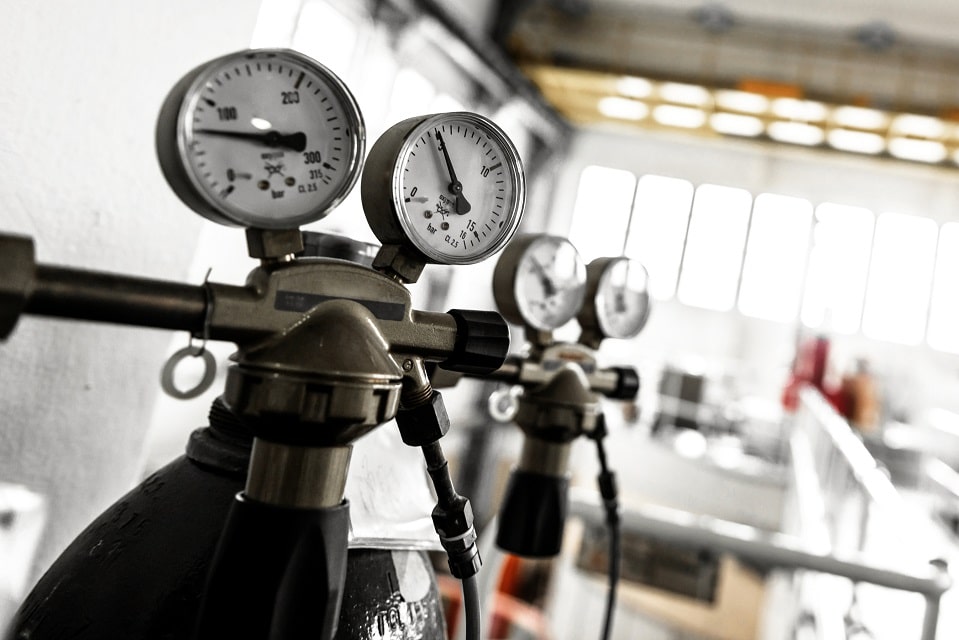compressed air and medical use

image showing compressed air tank
Compressed Air for Medical Use
Medical grade compressed air is used in just about every area of a hospital and is administered to patients who need inhaled medications and anesthesia, while patients are under anesthesia, for treatment of respiratory conditions, and to power ventilators.
The main uses of medical compressed air are:
- driving ventilators and incubators, where it provides uncontaminated and controlled air
flows helping to reduce high concentration of oxygen exposure. - as a carrier gas for anaesthetic agents.
- as a power source for powering surgical tools in the operating room.
Medical Air refers to a clean supply of compressed air used in hospitals and healthcare facilities to distribute medical gas. It needs to be free of contamination and particles, have no oil or odors, and must be dry to prevent water buildup in your facility’s pipeline. When a patient is in any emergency or non-emergency operating room, a surgeon relies on a medical air compressor to keep the patient comfortable and breathing. Medical air sources are connected to the medical air distribution system only and used only for air in the application of human respiration and calibration of medical devices for respiratory application. Besides the use of medical compressed air for medical gas and breathing, medical Instrument Air is compressed air purified to an appropriate safety level to meet the requirements of the Instrument Society of America and the NFPA (National Fire Protection Organization) as an alternative to Nitrogen. Equivalent to Nitrogen in pressure, dryness, and cleanliness, instrument compressed air can support multiple medical applications including driving surgical tools, operating pneumatic brakes and tables, central sterile supply, and laboratory air. Smaller operations that do not want to have a separate compressor and piping line, instead use pure nitrogen out of cylinders for this purpose.
Oil-free and oil-less air compressors are preferred method in supplying medical air, because it is the simplest, safest and most cost effective solution. In the past, oil-based medical air compressors have been known to suffer system failure due to the corrosion of lubricant and the dispersal of oil into compressed air. As a result most hospitals have switched to oil-free air compressors, which are not prone to breakdowns stemming from oil-related issues.
Water and moisture is the most dangerous contaminant to address in medical compressed air systems. It is corrosive, common and costly. Aside from causing damage to distribution piping and air receivers, unwanted moisture can lead to corrosion and mold growth on patient care equipment. Most distressingly, water can pass through filters that are made to block out particulate residue from iron, steel and rust. As such, water in all its forms — airborne moisture, system condensation — leads to endless repair bills and constant setbacks for medical air systems. This is especially important to avoid contamination from virus’ that can be carried by water and moisture. The most common enemy found in malfunctioning vaporizers is moisture, which can travel from machine tanks to tool tips via compressed air. Often, the damage will render such devices beyond repair. With anesthesia machines, a total refurbishment is generally required to make them operable again following moisture damage. When temperatures are low, condensation may form in system piping that can lead to freezing. As water degrades within an air compressor, bacteria can form. Water bacteria can ultimately send pathogens into the hospital environment.
Key areas that should be maintained to avoid water and moisture in medical compressed air
- Air Dryers. Any compressed air dryer must be properly fitted and sized. Any incompatible design or size, or overused system that causes any insufficient water removal will create costly problems in the system.
- Aftercooler drains should be checked regularly. If they are weak, worn out, stuck or damaged in anyway, moisture and water can enter downstream into the system.
- Faulty seals, liquid ring components that are worn can easily cause contaminants and especially moisture to enter a medical system.
Before problems arise, tests to insure cleanliness and dryness are normally repeated at regular intervals and evaluated for patterns in system behavior. Compressed air systems in hospitals must remain safe and sanitary. In times of dire emergencies, the medical compressed air system remains and important part of treatment and must be properly maintained. There are expert companies that can assist with the air filtration requirements for hospitals. For the delivery system air amplification technology and even vortex tube technology is being considered in some applications for air delivery, and even for the cooling of some medicines which may perform better when cooled. For these special applications special materials must be used to meet the high level of medical standards.
Compressed air for the medical industry is a power source that not everyone thinks about or realizes how important it can be. But properly managed medical compressed air saves lives every day.










